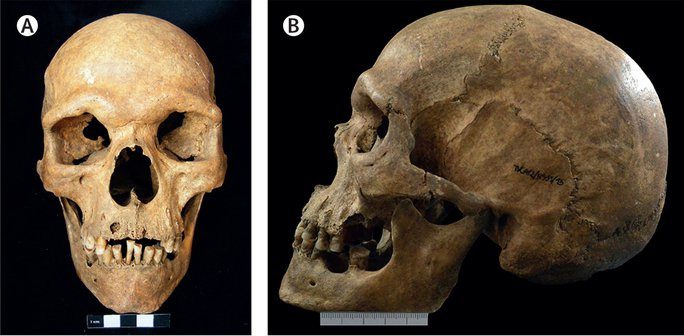Klinefelter Syndrome
According to PHYS, this is the oldest clinical case of “Klinefelter syndrome” ever discovered in the world. It is a super rare genetic condition, and not everyone carrying the genetic factor exhibits abnormalities in their body. For every 1,000 male births with the genetic link to this syndrome, only one person has an abnormal sex chromosome.
Typically, males have an XY pair of sex chromosomes, but individuals with this syndrome have an extra “X,” resulting in an XXY chromosome pattern.

Ancient skeletons have helped scientists make significant advances in evolutionary medicine research – (Photo: THE LANCET)
This excess female-specific chromosome typically leads to conditions such as testicular atrophy and various disorders that hinder reproductive capabilities.
A set of skeletons excavated by a team from the University of Coimbra in Portugal, carbon-dated to the 11th century, has been identified by an international research group led by Dr. João Teixeira from the Australian National University (ANU) as exhibiting Klinefelter syndrome.
The research team, which includes experts in genetics, statistics, archaeology, and anthropology, states that this discovery will help establish a historical record of this super rare syndrome and enhance understanding of it throughout human history.
According to Associate Professor Bastuen Llamas, Head of the Anthropology Department at the Australian Centre for Ancient DNA and a member of the research team, ancient DNA and its unique conditions will help rewrite the history of human populations and contribute to what is known as “evolutionary medicine,” playing a crucial role in modern medical research.
Additionally, the research team has established an advanced method for analyzing ancient remains, which they assert should be further improved and will aid in the study of other ancient chromosomal abnormalities, including Down syndrome.
This research has been published in the prestigious medical journal The Lancet.




















































